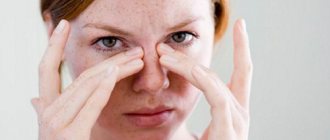There is an opinion that a Russian bathhouse is a healer of all ailments. Indeed, there are known cases of rapid recovery from various colds after visiting a bathhouse. But does a bath help with bronchitis? Let's consider all the pros and cons.
The healing properties of the bath
The respiratory system often suffers from viral attack due to hypothermia, contact with sick people and for other reasons. The bathhouse is an excellent remedy that strengthens our body, restores its protective functions, by helping to remove toxins and waste through sweat.
This method also allows you to significantly moisturize and warm the mucous membranes of the upper respiratory tract.
In its properties, it resembles warming compresses for bronchitis - such a useful bathhouse, people go to the bathhouse to relax, and this can be explained from a physiological point of view. With the release of sweat, excess lactic acid also comes out of the muscles, which gives us a feeling of fatigue.
It turns out that you can and should take a steam bath for bronchitis! But don't rush to conclusions.
Is it possible to carry the disease at home?
If the virus is mild, a person can refuse hospitalization and be treated at home. No special treatment methods are required, nor is constant medical supervision. Medications are prescribed as for a common cold. A distinctive feature is compliance with self-isolation.
To prevent infection of others, the patient must be in a separate room, follow the rules of hygiene, and use personal utensils. If the infected person does not live alone in the room, you need to follow important recommendations:
- constantly wash your hands with soap;
- ventilate the room several times a day;
- carry out wet cleaning;
- when in contact with others, wear gloves and a mask;
- After visiting a patient, treat the toilet with chlorine.
Bathhouse for bronchitis
Is it possible to go to the bathhouse if the bronchial mucosa is inflamed, if it is so useful? To find out whether it is possible to go to the bathhouse if you have bronchitis, you need to figure out what happens in the human body when visiting the steam room.
When bronchitis develops, the first symptom is a cough. It can be dry and wet. A dry cough is dangerous because there is no way out for pathogenic organisms, so medication to liquefy the sputum is required. A wet cough indicates that the disease is progressing well and the person will soon recover. For dry and wet coughs, it is recommended to use compresses with a warming effect. A bath for bronchitis also has a warming effect.
Processes that occur in the human body under the influence of heat in the bath:
- thermal effects promote dilation of the bronchi;
- if you go to the bathhouse with bronchitis, there is a decrease in the tone of the muscles of the respiratory tract and skeleton;
- breathing is normalized, gas exchange in the alveoli becomes better;
- moist warm air helps speed up metabolism, release large amounts of sweat and remove toxins from pathological microorganisms that cause bronchitis.
- The mucous membrane of the bronchi is moistened; this is the best time to remove phlegm from the body.
Sauna and bronchitis
Although the sauna is a close “relative” of the bathhouse, its operating principle is completely different. All saunas are dry air, there is no steam bath effect, the air is dry and hot.
Even in the non-acute form of the disease, bronchitis is painful. The chest is torn from coughing, chest and abdominal pain. The inhaled hot sauna air will only irritate the lungs, it will not bring relief.
Yes, the bronchi will warm up thoroughly, but they will miss the life-giving moist steam.
A not too hot sauna is suitable as a means of preventing bronchitis, but not as a means of treating the disease.
Visiting the bathhouse if you have bronchitis is not allowed
It would seem that bronchitis and a bath are incompatible concepts. Indeed, in some cases you cannot go to the bathhouse if there is an inflammatory process in the bronchial mucosa. Let's consider when the answer to the question of whether it is possible to steam and bathe in a bathhouse with bronchitis is negative.
- During the acute period of pathology development. When there is a dry cough and the patient takes medications to produce sputum and remove it, the thermal effects of the bath can only aggravate the situation.
- You cannot visit steam rooms at elevated temperatures; it must be within normal limits. If there is no temperature, the bath is not contraindicated.
- The patient will feel unwell in the bath with allergic obstruction, when bronchial hyperreactivity is increased. And saunas and baths are irritating to the bronchial mucosa. Also, if you are allergic to the components of herbal remedies used in the bathhouse, you should not visit it.
- If you have cancer, you should not go to the bathhouse.
- With the development of tuberculosis.
- People only steam when their pulse is up to 90 beats/min, and their blood pressure is not higher than 140/90.
- It is not allowed to go to the sauna and bathhouse if the patient still has shortness of breath when exhaling. This symptom indicates the development of obstruction.
- In case of severe vascular diseases, kidney or liver pathologies, you should not visit steam rooms.
Who's at risk
A mild form of the virus usually occurs in young children, adolescents and young adults, less often in patients aged 35-55 years who do not have chronic diseases. The selective fact is justified by a strong immune system, capable of independently destroying harmful microorganisms.
The disease can be aggravated by obesity, diabetes, and cardiovascular pathologies.
However, it was precisely those individuals whose disease was mild who became carriers of the dangerous virus, since they themselves usually did not even know about it. Asymptomatic people are considered to spread coronavirus infection around the world, as they look like completely healthy people.
Choice: sauna or steam bath
Is it possible to wash while visiting a bathhouse and a sauna, and are they significantly different?
A sauna differs from a bathhouse in that a person is exposed to dry air, whereas in a bathhouse there is constantly wet steam. If you have bronchitis, you can go to a bathhouse to separate mucus and remove it better due to the effect of steam on the mucous membranes of the respiratory organs.
The sauna is worse in terms of sputum separation. There, a person is exposed to dry air, which is not as conducive to the release of microbes with sputum as steam in a bathhouse. Visiting the sauna with bronchitis is recommended after all the symptoms of the disease have practically ceased to appear; there will only be residual effects. To prevent dry air from irritating the mucous membranes, it is recommended to drink herbal decoctions or mineral water after visiting the sauna.
To consolidate the therapeutic effect, you can brew tea from herbs and plants such as rose hips, chamomile, sage, St. John's wort, and thyme. You can boil a whole collection of herbs, or you can brew tea from a separate component.
Symptoms
During a mild coronavirus infection, the following symptoms may be observed:
- body temperature has been at 37-37.6 degrees for a long time;
- feeling unwell, tired, weak;
- appetite decreases;
- taste sensitivity is lost;
- the sense of smell disappears;
- There is a slight cough, runny nose, and sore throat.
Symptoms may include frequent headaches, gastrointestinal upset, nausea, and shortness of breath.
During the mild stage of the disease, symptoms of coronavirus infection can last from 2 to 3 weeks. If the disease is severe, the patient’s well-being does not improve within 6 weeks.
What is a runny nose?
Typically, a runny nose due to coronavirus is caused by nasal congestion without leakage. In acute respiratory viral diseases and colds, watery discharge in large quantities is considered to be common symptoms. In rare cases, the infection is accompanied by a runny nose, the mucous membrane remains dry.
Rules for visiting steam rooms for bronchitis
For children, it is recommended that they get used to the atmosphere of a bathhouse or sauna separately. It is necessary to start with a comfortable ambient temperature in the steam room, then gradually increase it. There are certain nuances that can make a trip to the bathhouse more productive and enjoyable.
- Drink tea. Half an hour before going to the bathhouse, you need to drink herbal tea. This is necessary to prepare the body for the release of waste and toxins. The child should be given tea from those components to which he is not allergic. The best herbs for decoctions are chamomile, marshmallow root, coltsfoot, thyme, St. John's wort.
- While visiting the bathhouse, adding eucalyptus essential oil will help relieve fatigue.
- Beginners are allowed to stay in the steam room for up to 15 minutes.
- In order not to burden the body after the bath, you need to dress warmly, then gradually remove excess clothing.
- Before visiting the bathhouse, you need to take a fasting day the day before and drink more fluids so that as many toxins as possible come out through sweat and the phlegm is better cleared.
- It is better to go to the bathhouse and sauna immediately after bronchitis in the first half of the day. The mucus has settled in the respiratory tract overnight, and the steam will help remove it.
The treatment procedure should be completed by completely drying the entire body, especially the hair, this is important in winter.
How does the disease progress in a mild form?
A viral infection can last up to one month, sometimes the disease resembles a long-lasting cold. If a person has a mild form of the disease, the symptoms will appear alternately:
- 1-3 days. You feel weak, body temperature can fluctuate from 37 to 38 degrees. Loss of sense of smell, headache, occasional cough;
- 4-5 days. Peak of the disease. A dry cough appears, the patient finds it difficult to breathe, but the body temperature begins to return to normal;
- 6-10 days. Shortness of breath and chest tightness may occur;
- 11-30 day. Recovery comes gradually, health improves, strength returns.
For each person, the period of the disease may vary depending on the immune system and the individual characteristics of the body. The average duration of a mild form of the disease is usually no more than two weeks. After 14 days, a repeat test for viral infection is carried out; if the result is negative, the patient’s recovery is stated.
How to properly use salt in a bath for bronchitis?
Salt is a universal antibacterial agent. Its healing properties have long been known to mankind. One of the most effective methods of combating bronchitis with salt is inhalation.
Salt inhalations
For this inhalation you will need salt and nothing else. Salt should be poured into a coffee grinder and grind finely. Pour the resulting flour into a small, dry container. In the bath you should inhale this ground salt. After this, you need to steam so that the salt is absorbed by the body. This remedy for combating bronchitis will help you cope with this disease in the shortest possible time.
Treatment
If you notice symptoms of coronavirus, you need to call a doctor at home, as an examination by a medical specialist is necessary. In most cases, mild disease can be treated without medication. Usually the doctor prescribes plenty of fluids and bed rest. If the body temperature exceeds 38 degrees, medications in the form of Paracetamol, Nimesil, and Ibuprofen are prescribed.
Antipyretic drugs can be taken for frequent headaches, fever, abnormal heart rhythm, and chest pain.
Medicines that will help eliminate the symptoms of the virus:
- Miramistin and Chlorhexidine are good for gargling;
- take Ambroxol for cough, inhalation with an alkaline solution;
- Naphthyzin, Galazolin, Otrivin will help remove nasal congestion.
Doctors recommend that sick people eat natural, healthy foods. The diet should contain proteins, fresh vegetables, fruits, fermented milk and dairy products, cinnamon, and fish. You should drink large quantities of plain and mineral water, tea with the addition of medicinal herbs, and compotes.
If bronchitis “lingers on”
Both adults and children are familiar with bronchitis firsthand. The pathology is so common that, in most cases, it does not attract much attention. And most often it does not pose a serious threat. However, the disease may drag on or appear excessively often. Being a sign of significant violations and, at the same time, the basis for future complications.
Protective "reserve"
The bronchi, as well as the respiratory system as a whole, are in direct contact with the surrounding air, continuously protecting themselves from the aggression of the abrasive and toxic elements of the latter.
Among the protective “bronchial” mechanisms:
- mucus covering the inner surface of the bronchi and mechanically “precipitating” foreign elements;
- the movement of specialized cilia that propel mucous secretions along with foreign impurities back into the oral cavity;
- a powerful muscle layer, the contraction of which narrows the diameter of the bronchi, thereby reducing the further intake of irritants and increasing air pressure during exhalation (one of the cough mechanisms);
- local immunity factors (IgA, macrophages and others)
- and the rate of renewal of bronchial epithelial cells (on average 2-3 weeks).
At the same time, aggression of any origin (smoking, bacteria, viruses, etc.) stimulates the strengthening of each of the listed factors. And, in the end:
- mucus production increases and it becomes more sticky (to more effectively “glue” irritants together),
- eyelashes “work” more actively,
- the bronchi narrow (which is manifested by wheezing)
- and a cough appears,
- and immune cells begin to secrete aggressive enzymes that literally “corrode” all protein formations.
Normally, such transformations are quite enough to quickly and effectively cope with the irritant. However, in some cases, protective mechanisms are still exhausted.
Breakdown of defense mechanisms
One of the main factors in the chronicity of bronchitis is regular damage to bronchial cells.
This situation is more often associated with smoking or inhaling dust in hazardous industries, but it can also be a consequence of immune pathologies, as a result of which inflammation is not completely controlled and “background” persists in a sluggish form.
As a result, the cells of the bronchial mucosa simply do not have time to recover after damage:
- there are fewer and fewer cilia (since, in fact, these are special “protrusions” on the surface of the same epithelial cells) and their activity decreases;
- mucus accumulates in the lumen of the bronchi, becoming a breeding ground for bacteria;
- constantly narrowed bronchi maintain difficulty breathing,
- damaged mucous membrane “exposes” cough receptors, which is accompanied by constant tickling and coughing,
- and immune forces (especially phagocytosis) significantly lose their effectiveness.
Without treatment, this pathology can be complicated by the addition of aggressive bacterial flora and “descend” into the lungs, provoking the development of inflammation.
And for smokers and employees of “dust industries” it ends in the “formation” of chronic obstructive disease and respiratory failure.
If the immune system is powerless
Frequent and prolonged bronchitis in children is most often associated with immune pathology. And the cause of such disorders can be both congenital disorders and response characteristics, as well as “banal” deficiency of a number of vitamins and microelements.
We are talking primarily about vitamin D, iron, zinc and copper, as well as antioxidants - selenium, vitamins C and E, which have a stimulating effect on the immune system.
A decrease in the production of leukocytes and a violation of their separation “according to orders” can be triggered by a deficiency of vitamin B9 (folic acid).
In adults, in addition to the listed factors, weakened immunity is associated with a lack of thyroid hormones (free T4 and T3) and “problems” with the liver. In children, this nature of immune damage is still quite rare.
In any case, frequent bronchitis, both in children and adults, requires consultation with an immunologist, monitoring and correction of the immune status.
And among other things, we should not forget about the sources of chronic infection in the nasopharynx and oropharynx (tonsillitis, sinusitis and others).
The latter regularly “throw” bacteria into weakened bronchi. You can assess the quality and quantity of pathogenic flora and select effective drugs for them using a swab from the throat and nose for culture.
By the way, the infectious nature of prolonged bronchitis can also be associated with the “cunning” intracellular flora - mycoplasmas and chlamydophila pneumoniae, the presence of which is often only indicated by a prolonged cough.
The activity of such pathogens is observed precisely in cases of weakened immunity, and their detection is only possible by analyzing a smear from the throat (or sputum, if separated) using the PCR method.
And of course, bronchitis is a faithful companion to most seasonal ARVIs. True, respiratory viral infections themselves “do not tend” to provoke chronic inflammation, but only significantly weaken the bronchial mucosa. Therefore, if after ARVI “residual effects” last more than 2 weeks, you should still look for the cause in bacteria and immunity disorders.











